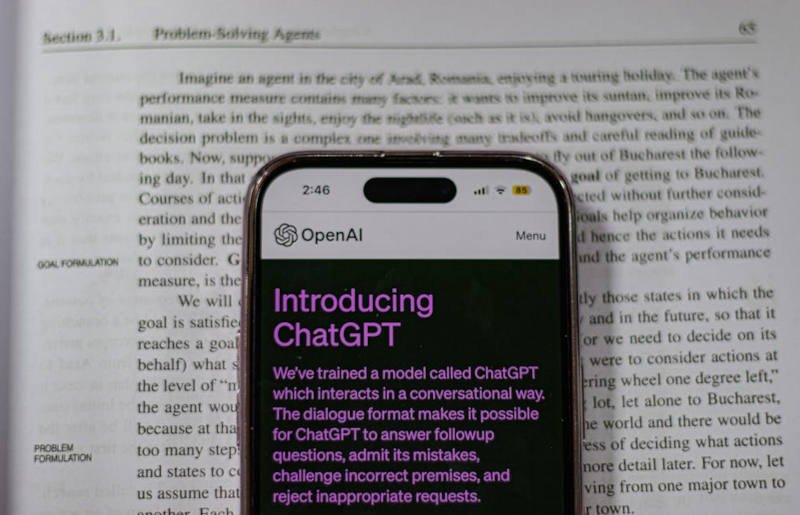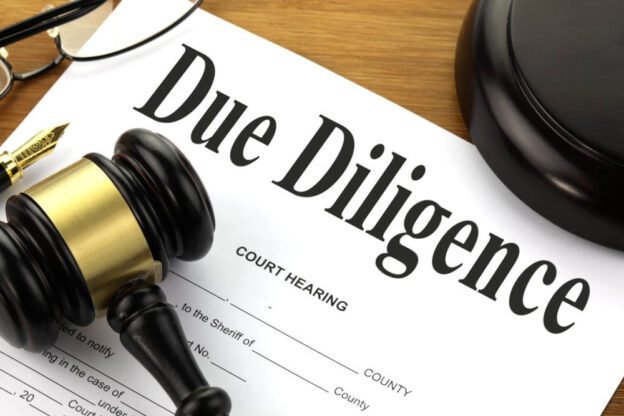Introduction to Guerilla Marketing
Guerilla marketing is a dynamic and unconventional approach to promoting products or services. Unlike traditional marketing strategies that predominantly emphasize large-scale advertising through established media channels, Guerilla marketing relies on creativity, surprise, and non-traditional tactics to capture the attention of consumers. This method seeks to create memorable brand experiences that resonate deeply with audiences, often with minimal financial investment.
At the core of Guerilla marketing lies the principle of leveraging unexpected methods to achieve impactful results. Whether through street art, flash mobs, or interactive public displays, the aim is to engage the target audience in ways that traditional ads cannot. This form of marketing celebrates the power of creativity, encouraging marketers to think outside the box and generate buzz around their brands. As a result, guerilla marketing often leads to heightened brand awareness and customer loyalty, creating lasting impressions that transcend conventional advertising limits.

Another defining characteristic of guerilla marketing is its emphasis on surprise and intrigue. By introducing an element of the unexpected, brands can stimulate curiosity and invite potential customers to explore further. This approach manifests in various forms, from viral social media campaigns to immersive experiences that captivate and engage. Importantly, guerilla marketing does not necessitate extensive budgets; rather, it thrives on innovation and resourcefulness, allowing brands of all sizes the opportunity to compete effectively in crowded markets.
As we delve further into the world of guerilla marketing, it becomes evident that this approach not only redefines promotional strategies but also sets the stage for creating powerful connections between brands and their audiences. By embracing creativity and unconventional thinking, businesses can navigate the evolving landscape of marketing with agility and effectiveness.
Understanding Your Audience
Before embarking on a guerilla marketing strategy, it is imperative to have a thorough understanding of your target audience. This understanding serves as the foundation for creating meaningful campaigns that resonate with potential consumers. To effectively engage your audience, marketers should employ various methods of research to uncover consumer behavior, preferences, and demographics.
One effective approach is to analyze existing customer data. This can include surveys, social media insights, and website analytics that reveal age, gender, location, and interests. Conducting qualitative research through focus groups and interviews can provide deeper insights into your audience’s motivations and values. Engaging directly with consumers can yield valuable information about their desires and pain points, allowing marketers to construct appealing messages that address their needs.
Additionally, trends in consumer behavior can provide a broader context for understanding your audience. Utilizing tools such as Google Trends or social listening tools can help identify popular topics and conversations relevant to your target market. It is also important to consider cultural and social factors influencing your audience’s preferences. This understanding can shape your messaging, ensuring that it aligns with their values and resonates with their experiences.
Once you have gathered this data, the next step is to tailor your gorilla marketing campaigns to reflect the interests of your audience. This may involve creating relatable content that speaks to their desires or aligning your message with causes or values that are important to them. By personalizing your approach, you not only amplify engagement but also foster a stronger connection between your brand and your audience, ultimately enhancing the effectiveness of your marketing efforts.
Innovative Outdoor Campaign Ideas

Utilizing outdoor spaces for marketing purposes presents a unique opportunity to engage with the public in unexpected ways. Innovative outdoor campaigns not only capture attention but also encourage community participation, making them effective tools for brand promotion. One of the most lively strategies is hosting a flash mob. This spontaneous gathering of performers can take place in busy areas, such as parks or shopping centers, delivering an entertaining and memorable experience for onlookers. By incorporating brand elements into the performance, companies can seamlessly connect the excitement of the event with their marketing message.
Another effective approach is the organization of pop-up events. These temporary activations can vary from food stalls to interactive experiences and art installations, designed to surprise and delight passersby. By strategically selecting high foot-traffic locations, brands can maximize visibility and create a sense of urgency and exclusivity. For instance, a pop-up shop that offers limited-time products encourages immediate consumer engagement and prompts social media sharing, amplifying the marketing message beyond the immediate environment.
Eye-catching installations are also a noteworthy consideration for outdoor campaigns. Creating large-scale art pieces or artistic displays that resonate with the target audience can generate significant foot traffic. These installations not only serve as a backdrop for social media photos but can also be designed to highlight brand values or messages, fostering a deeper connection with the audience. Careful planning ensures that these installations are accessible and engaging, encouraging visitors to interact with the brand organically.
In leveraging these innovative outdoor marketing ideas, brands can generate buzz, foster community engagement, and ultimately boost visibility through both physical presence and online sharing. These campaigns not only attract attention but also enhance consumer experience, making them integral to any successful marketing strategy.
Utilizing Social Media for Guerrilla Marketing

In today’s digital landscape, social media platforms serve as powerful tools for executing guerrilla marketing strategies. By harnessing the innate capacity of these platforms, brands can significantly amplify their marketing efforts and create impactful connections with their audience. One effective approach is to focus on creating shareable content that resonates with users, encouraging them to disseminate the message across their networks. Engaging visuals, entertaining videos, and thought-provoking posts are particularly influential in drawing attention and fostering engagement.
Moreover, collaborating with influencers can enhance a brand’s guerrilla marketing initiatives. Influencers often possess established followings and can effectively bring authentic exposure to your campaign. By identifying influencers who align with your brand values and whose audience matches your target demographic, you can leverage their credibility to drive discussions around your marketing efforts. This partnership can result in an exponential increase in reach and engagement, providing access to a wider audience.
Incorporating trending topics into your content strategy is another valuable tactic for viral campaigns. Monitoring social media trends allows brands to stay relevant and tap into ongoing conversations. When a marketing campaign is closely tied to current events or popular trends, it is more likely to capture the attention of users, thus increasing the chances of shareability and engagement.
Timing is crucial in guerrilla marketing on social media. Research shows that delivering content during peak hours can maximize visibility and participation. Additionally, utilizing relevant hashtags enhances discoverability, enabling users to connect with your campaign more easily. By carefully choosing hashtags that align with the campaign’s theme and the current landscape, brands can enhance their outreach and encourage user interaction.
By strategically utilizing social media, brands can transform their guerrilla marketing initiatives into powerful, engaging endeavors that resonate with their target audience.
Interactive Campaign Ideas

Interactive campaigns represent a powerful facet of guerilla marketing, effectively bridging the gap between brands and consumers. By implementing unique installations, engaging contests, or thrilling scavenger hunts, brands can create memorable experiences that captivate their audience’s attention. These strategies not only entertain but also foster a personal connection, enhancing the consumer’s relationship with the brand.
One notable approach involves creating immersive interactive installations that invite consumers to engage with the brand on a deeper level. For example, a pop-up installation in a public space can allow potential customers to experience a product firsthand. Such setups encourage participation, sparking curiosity and conversation among onlookers. When consumers can physically interact with a brand, it facilitates a sense of ownership and loyalty, transforming mere interest into engagement.
Contests and competitions also serve as an effective means to cultivate interaction. By hosting gamified experiences, brands encourage consumers to participate in a fun and dynamic way. For instance, social media-based campaigns that require users to share content or complete challenges can result in increased reach and visibility. This two-way communication not only highlights the brand’s creativity but also ensures consumer involvement, tapping into their desire for recognition and rewards.
Moreover, scavenger hunts offer an excellent method for enhancing brand visibility while promoting consumer engagement. By strategically placing clues or tasks in various locations, brands can create a sense of adventure for participants. This approach not only drives foot traffic but also encourages teams or individuals to work together, further cementing a communal bond with the brand. Such interactive tactics empower consumers, making them advocates for the brand as they share their experiences with others.
Overall, interactive guerilla marketing tactics are instrumental in building enduring brand loyalty. By prioritizing engagement through unique experiences, brands can develop meaningful connections that resonate with consumers, ultimately leading to sustained growth and recognition in the marketplace.
Collaborations and Partnerships

Collaborations and partnerships represent a powerful strategy in guerrilla marketing that can significantly amplify a brand’s reach and impact. By joining forces with other brands, local businesses, or artists, companies can pool their resources, audiences, and creative ideas, leading to innovative marketing campaigns that capture attention and foster community engagement. Collaborative efforts can range from co-hosted events to shared advertising initiatives, each designed to leverage the strengths of each partner.
A prime example of a successful collaboration is the partnership between a renowned coffee shop and a local artist. The coffee shop invited the artist to design a series of unique coffee cup sleeves, each inspired by various themes within the community. This not only provided the artist with exposure and recognition, but it also attracted new customers to the coffee shop, drawn by the art as well as the beverage offerings. Such initiatives demonstrate how the fusion of talents can create memorable experiences for consumers, benefiting both parties involved.
Similarly, brands can explore collaborations with local businesses to enhance their guerrilla marketing strategies. For instance, a fitness apparel company might team up with a nearby gym to create an interactive pop-up event where attendees can participate in fitness challenges while showcasing the brand’s latest offerings. This not only fuels excitement around the product but also brings together two different audiences, creating a mutually beneficial environment that encourages participation and engagement. Additionally, such partnerships often lead to organic sharing on social media, expanding reach without substantial additional investment.
Through calculated collaborations, brands can differentiate themselves in competitive markets. By tapping into combined audiences and resources, businesses can foster a sense of community, provide unique consumer experiences, and ultimately achieve greater visibility and impact through innovative guerrilla marketing efforts.
Measuring the Success of Your Campaign

In the realm of gorilla marketing, understanding the effectiveness of your campaign is vital to shaping future strategies. Measuring success involves tracking a variety of quantitative and qualitative metrics that reflect both engagement and impact. Key performance indicators (KPIs) such as engagement rates, reach, and conversion rates play a prominent role in assessing how well a campaign resonates with the target audience.
Engagement rates provide insight into how actively your audience interacts with your content. This can be quantified through social media metrics, including likes, shares, and comments, as well as website analytics that track user behavior. High engagement can indicate a strong connection with the audience, suggesting that the guerrilla marketing tactics employed were effective in capturing attention and encouraging interaction.
Reach, another critical metric, evaluates the overall visibility of your campaign. It reflects the number of unique individuals who come into contact with your marketing message. By monitoring reach, businesses can determine the scope of their influence and assess if their guerrilla marketing strategy is effectively penetrating the intended market.
Conversion rates ultimately reveal the success of a campaign by indicating the percentage of individuals who take a predetermined action, such as signing up for a newsletter, downloading a resource, or making a purchase. Analyzing conversion rates allows brands to identify not only how compelling their marketing messages were but also how effectively they translated interest into action.
In addition to these numerical metrics, gathering qualitative feedback is essential for measuring campaign success. Surveys, customer feedback, and social listening tools can provide valuable insights that enhance the understanding of customer experiences and sentiments. This feedback informs future campaigns, ultimately contributing to the continuous improvement of gorilla marketing efforts.
Challenges and Ethical Considerations
Guerilla marketing, while an innovative approach to brand promotion, can come with a unique set of challenges that marketers must navigate carefully. One of the primary concerns is public reception; the unconventional tactics employed may not resonate with all audiences, leading to mixed responses. In some cases, a campaign designed to be humorous or engaging could be misinterpreted, resulting in negative publicity. This raises questions about how brands can ensure their guerilla marketing strategies align with customer values and expectations.
Another significant consideration is the risk of backlash. Unforeseen consequences can arise when campaigns appear insensitive or inappropriate, particularly in diverse public environments. For example, a guerrilla marketing tactic that relies on shock value might alienate potential customers if it crosses established social norms. Therefore, it is crucial for brands to anticipate these reactions and prepare for potential criticism. Engaging with target demographics prior to the campaign launch can provide valuable insights that help mitigate these risks.
Moreover, ethical marketing practices should be at the forefront of any guerilla marketing initiative. Taking responsibility for the impact of marketing actions fosters a positive brand image and encourages consumer trust. Brands must ensure that their campaigns do not exploit sensitive topics, perpetuate stereotypes, or engage in manipulative tactics. By prioritizing respect and appropriateness, businesses can create a more inclusive environment, which is vital in today’s socially-conscious marketplace.
Ultimately, the key to successful guerilla marketing lies in balancing creativity with ethical considerations. By addressing potential challenges head-on and carefully crafting their messaging, brands can effectively leverage guerrilla marketing while avoiding common pitfalls that may tarnish public perception.
Case Studies of Successful Guerilla Marketing Campaigns

Guerilla marketing, a creative and unconventional approach to advertising, has been utilized by various brands to garner attention and drive engagement. One standout example is the 2014 campaign by the charity campaign “The Ice Bucket Challenge.” This social media-driven movement not only raised awareness for ALS but also engaged millions of participants worldwide in a fun and interactive manner. By encouraging users to film themselves pouring ice water over their heads and challenging friends to do the same, the campaign transformed a serious cause into a viral phenomenon, ultimately raising over $220 million.
Another notable case is Red Bull’s extreme sports marketing, particularly its sponsorship of the “Stratos” jump in 2012. This high-stakes endeavor involved skydiver Felix Baumgartner jumping from 128,000 feet above Earth, breaking multiple records in the process. Red Bull not only generated massive media coverage but also reinforced its brand image as an adventurous and daring company. The event captivated millions of viewers, showcasing the power of guerilla marketing in creating memorable experiences that resonate with the audience.
Furthermore, the 2018 “Hannibal Buress and the GED” campaign illustrates how humor can be effectively integrated into guerilla marketing strategies. Comedian Hannibal Buress, in partnership with an educational organization, created a series of unexpected comedic events that highlighted the importance of continuing education. This campaign faced the challenge of standing out in an information-saturated market, yet it managed to capture attention and engage viewers through its unique blend of comedy and a worthy cause. As a result, the initiative significantly increased brand awareness and led to a rise in enrollment for adult education programs.
These case studies exemplify how innovative strategies, humor, and interactivity intertwine in successful guerilla marketing campaigns. By examining these real-world applications, brands can draw inspiration and practical insights to formulate their own impactful marketing endeavors.
If you’d like to get twenty percent off on hosting with Hostinger, send me a message and I’ll send you a special link for a discount.
If the Hostinger AI Content Generator makes you feel you could benefit from other similar technology, you can find more here.












